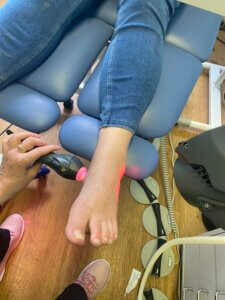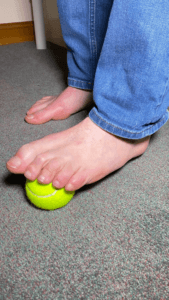My Heel Hurts! What should I do?
Heel pain can be a right pain in the… heel. Plantar fasciitis is a common problem affecting the bottom of the foot, causing that annoying pain near the middle of your heel and sometimes extends into the area of the arch. It can affect just one foot or occasionally both at the same time.
Symptoms often associated with plantar fasciitis are pain upon getting up first thing in the morning which eases after a few steps and pain which is triggered when you stand up after a period of rest which again eases after some movement.
A few quick tips to help yourself immediately are:
- Roll a tennis or lacross ball under your
 foot to massage tense tissues
foot to massage tense tissues - Chill a water bottle and roll it under your foot to calm down any inflammation
- Strengthen the muscles in your foot by picking up a pencil or ribbon with your toes
However, it’s important to know that here are many different things which can cause heel pain. It’s really important to make sure you know exactly what is causing your heel to hurt before you start any form of treatment plan (mostly so you don’t waste time and money on things that won’t work!). I highly recommend booking in for a session with Galileo with us at Totally Podiatry where I can carry out a full assessment, give you an accurate diagnosis and come up with a treatment plan to get you pain-free and back to your usual activities as quickly as possible.
When you come to visit me, some of the things I suggest for your treatment plan might include:
- Orthotics (insoles)
- Taping to support your foot
- Changing your footwear
- Modifying your activities to reduce stress on the sore tissues
- Laser therapy
- Exercises to strengthen the affected muscles

I am are delighted to use Galileo, my MLSⓇ laser, in clinic which could quickly help to reduce pain and inflammation associated with plantar fasciitis. Patients love my laser because it’s a totally painless and completely safe treatment. It offers an effective alternative to taking anti-inflammatory medication and more painful or invasive treatment options such as shockwave therapy or steroid injections. You can find out more about him here.
For more information on how we can help you with your heel pain you can contact us here.
 foot to massage tense tissues
foot to massage tense tissues